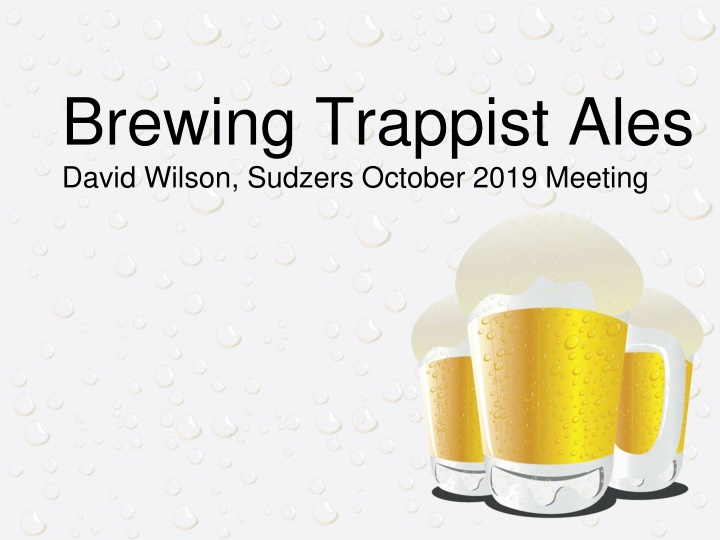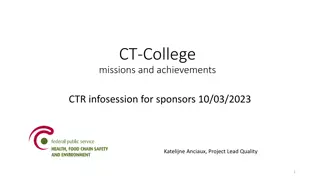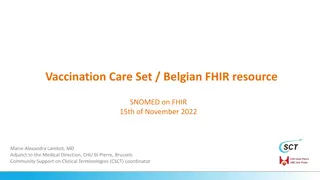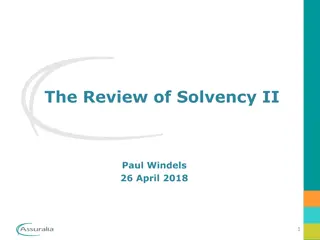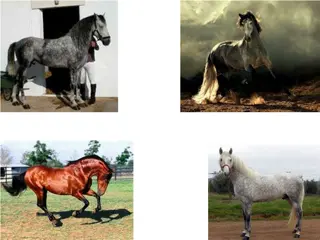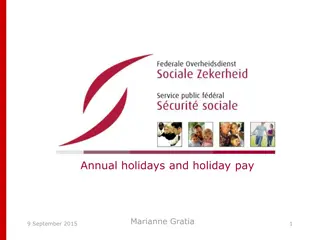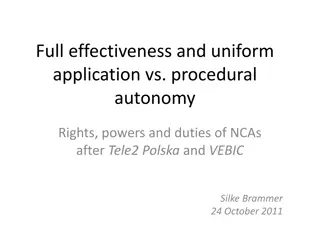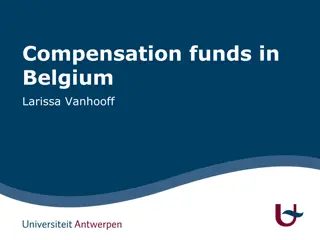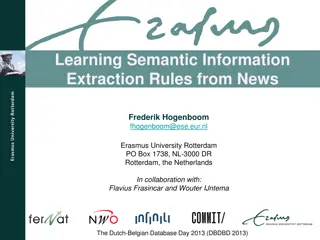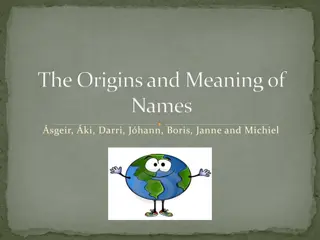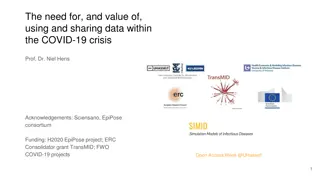Trappist and Belgian Ales
Trappist Ales are exclusive to certain abbeys, while Belgian Ales have broader variations. Learn about the terminology, styles, and malts involved in brewing these unique ales.
Download Presentation

Please find below an Image/Link to download the presentation.
The content on the website is provided AS IS for your information and personal use only. It may not be sold, licensed, or shared on other websites without obtaining consent from the author.If you encounter any issues during the download, it is possible that the publisher has removed the file from their server.
You are allowed to download the files provided on this website for personal or commercial use, subject to the condition that they are used lawfully. All files are the property of their respective owners.
The content on the website is provided AS IS for your information and personal use only. It may not be sold, licensed, or shared on other websites without obtaining consent from the author.
E N D
Presentation Transcript
Brewing Trappist Ales David Wilson, Sudzers October 2019 Meeting
Terminology Trappist vs. Abbey vs. Belgian Trappist: Technically an appelation (Authentic Trappist Product) that is exclusive to a small number of Trappist abbeys. Trappist is a marketing term, not a style. Achel Chimay Orval Rochefort Westmalle Westvleteren
Terminology Trappist vs. Abbey vs. Belgian Abbey: Means a beer is associated with an abbey, often produced by commercial breweries licensing an Abbey s name. Leffe (AB InBev) Affligem (Heineken) St. Feuillien
Terminology Trappist vs. Abbey vs. Belgian Belgian: Term can be used by any brewer to describe beers brewed in the style of trappist or abbey ales. May also include styles falling outside of trappist production (i.e. belgian wit). Russian River Duvel Moortgat Allagash
Terminology Lower ABV Light Trappist Ales (SRM: 3-5, OG: 1.030-1.060) Single, Patersbier, Enkel, Blond, Extra Westmalle Extra, Westvleteren Blond, Achel Blond Higher ABV Light Trappist Ales (SRM: 4-8, OG 1.060-1.085) Tripel (Belgian Golden Strong, Abbey ) Westmalle Tripel, Chimay White, Tripel Karmeliet, Damnation
Terminology Lower ABV Dark Ales (SRM: 10-17, OG: 1.062-1.075) Dubbel Rochefort 6, Westmalle Dubbel, Chimay Red Higher ABV Dark Trappist Ales (SRM: 12-22, OG 1.075-1.110) Belgian Dark Strong, Quadrupel (Quad) Rochefort 10, Westvleteren 12, Chimay Grande Reserve
BJCP Recognized Trappist Ales Single Dubbel Tripel Belgian Dark Strong
Malt (Castle/Dingemans) Belgian pilsner malt is the base malt for all styles A good tripel can be made with just pilsner and sugar Light and dark style character malts Aromatic/Biscuit (15-30 L) Munich/Vienna (3-15 L) Additional dark style character malts Caravienne (20-25 L) Caramunich (40-60 L) Special B (~150 L, controversial) Roasted malts (300-500 L)* *Generally I m against roasted malts in belgian beers
Adjuncts Sugar Should account for 5-20% of your fermentables Plain white table sugar is fine for light beers Can use belgian candi syrups for darker beers Avoid the rock candy . Belgian brewers use caramel syrup made from caramelized invert syrup Wheat (malted or flaked) Can be used in low amounts (~5%) for head retention or higher amounts (30%) for body and flavor
Hops Use noble hops, aim for BU:GU ratio of 3:8. Higher for light beers, lower for darker beers Hallertau, Tettnanger, Spalt, Saaz Hoppy Belgian Pale Ales are also now in vogue Allagash s Hoppy Table Beer and The Bruery s Mischief Not traditional, but can be fun to play with
Water Target relatively soft water 2:1 Sulfate to Chloride for lighter beers 1:1 Sulfate to Chloride for darker beers Adjust water with acid as needed to hit mash pH (5.2- 5.5)
Brewing Single infusion mash is sufficient, between 148-150 F. Avoid protein rest on modified malts. Add sugar at end of boil for light beers, at start of boil for dark beers Alternatively, add sugar to fermenter at high krausen to avoid stressing a low yeast pitch Long boil 90 min often suggested DMS is a concern Aerate well, pitch a healthy starter
Yeast Yeast is the soul of any good belgian beer Historically all trappist ales were brewed with an Abbey s house culture Often times gifted from other Abbeys Characterized by esters (solventy, bubblegum, tropical fruit, bannana) and phenolics (bandaid- plastic, clove). May also have a light sulfur finish
Yeast Many Trappist strains are commercially available White Labs Wyeast Origin WLP500 WY1214 Chimay WLP530 WY3797 Westmalle WLP540 WY1762 Rochefort WLP550 WY3522 Achouffe WLP570 WY1388 Duvel WLP510 -- Orval* -- WY3864 Unibroue *Add brett at packaging to simulate Orval
Yeast Caveats Most of these strains were isolated decades ago Fermentation context matters (volume, geometry, temperature, pitch rate, etc.) Results may vary
Fermentatio n Pitch plenty of healthy, viable yeast and PITCH COLD Pitch between 62-66 F Hold at lower temperatures (66-68 F) for 1 day Allow to freerise (68-80 F). Avoid chilling excessively at this point to avoid stalling yeast Thoroughly aerate Pull off airlock and shake yeast up at day 2 Can add sugar adjuncts at this point too Rest at F.G. at room temperature for 3-5 days Cold condition for 1-2 weeks
Fermentatio n Achel Pitch at 63-64 F, Freerise to 72-73 F Westmalle Pitch at 64 F, Freerise to 68 F Westvleteren Pitch at 68 F, Freerise to 84 F (open fermentation)
Style Specifics - Single Fermentables Pilsner malt (50-90%) Munich/aromatic/biscuit (0-5%) Wheat (0-25%) Sugar (5-15%) Hops Noble (traditional) or American ( hoppy belgian ) Spices (uncommon)
Style Specifics - Tripel Fermentables Pilsner malt (75-90%) Munich/aromatic/biscuit (0-5%) Wheat (0-5%) Sugar (5-20%) Hops Noble
Style Specifics - Dubbel Fermentables Hops Noble Pilsner malt (60-85%) Munich/aromatic/biscuit (0-15%) Light crystals, 20-60 L (0-10%) Special B (0-5%) Roasted malts (0-5%) Candi Syrup (5-15%) Extras Dried fruit (not traditional)
Style Specifics - BDS Fermentables Hops Noble Pilsner malt (50-85%) Munich/aromatic/biscuit (0-20%) Light crystals, 20-60 L (0-10%) Special B (0-7%) Roasted malts (0-5%) Candi Syrup (5-15%) Extras Dried fruit (not traditional) Barrel aging (not traditional)
Post Fermentation Clarity should be good Cold conditioning and finings agents should achieve this Carbonation should be medium-high to high Light ales: 2.5-3 volumes Dark ales: 2-2.5 volumes Bottle conditioning may require re-yeasting Remember to use heavy walled bottles!
General Tips Brew a dry beer Mash low, use sugar, pitch enough yeast, avoid excessive chilling at end of fermentation Limit use of crystal malts Simpler is (usually) better Pitch cold Rest after hitting F.G. and allow for long cold conditioning Play with different yeast strains, find your favorite Orval: Bottle with brettonamyces
